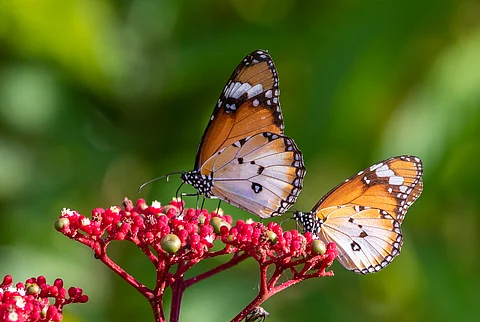

Road verges may hold the key to rewilding our cities, according to a new study from Singapore that finds these overlooked strips of greenery can boost butterfly populations—even in concrete-heavy urban jungles.
The research, published in the journal Landscape and Urban Planning, revealed that floral diversity and structural complexity within road verges increased both the abundance and richness of butterfly species. The researchers assessed 101 road verges across Singapore, a densely populated city-state that has branded itself “a City in Nature”.
The study, which observed 56 butterfly species across 1,320 nectar-feeding events, adds to a growing body of research urging city planners to look beyond traditional parks and consider how linear green infrastructure — such as road verges — can stitch together fragmented urban habitats.
By using structural equation modelling, the researchers examined how factors like nectar availability, verge size, traffic density and surrounding green cover influenced butterfly diversity. They found that nectar-floral diversity had the strongest direct positive effect. Road verges planted with a variety of flowering species — mostly non-natives — attracted a greater number of butterflies, despite the plants not being native to the region.
Interestingly, although larger verge size and greater plant richness did not directly lead to higher butterfly numbers, they indirectly supported butterfly populations by improving nectar availability and increasing structural complexity. This complexity—essentially the variation in vegetation height—created more favourable microclimates and offered protection from disturbances.
Conversely, roads with higher traffic density had a direct negative impact on butterfly diversity. Collisions, pollution and turbulence from vehicles appeared to disrupt butterfly activity and feeding behaviour. Yet, butterflies fared better where road verges were surrounded by larger areas of green space, particularly at broader landscape scales (500–1000 metres), rather than within smaller, immediate local zones.
The findings challenge traditional urban planning priorities that often overlook small-scale green spaces like road verges. “Our results highlight opportunities to improve road verges to benefit butterflies, a commonly used flagship taxon for biodiversity,” the authors wrote in the paper.
They suggested that selective mowing, planting a mix of flowering species and maintaining structural variation in vegetation could be low-cost ways to boost urban biodiversity.
Singapore’s approach, with 50 per cent of its land area now vegetated and connected via “Park Connectors” and “Nature Ways”, offers a potential model for other cities grappling with biodiversity loss. As urban expansion accelerates globally, the study provides timely evidence that even modest patches of greenery can make a big difference to the insects that keep ecosystems functioning.